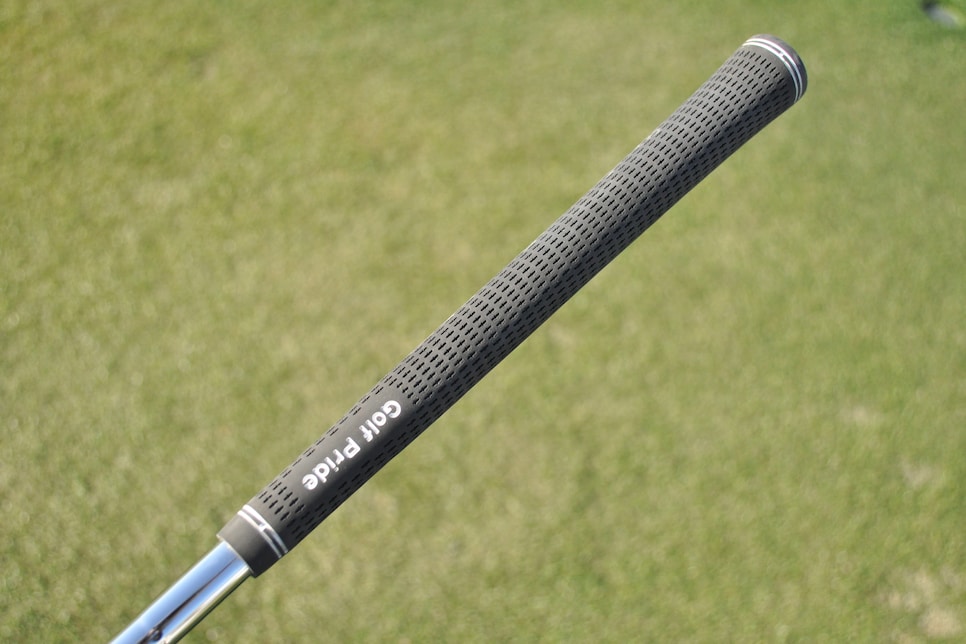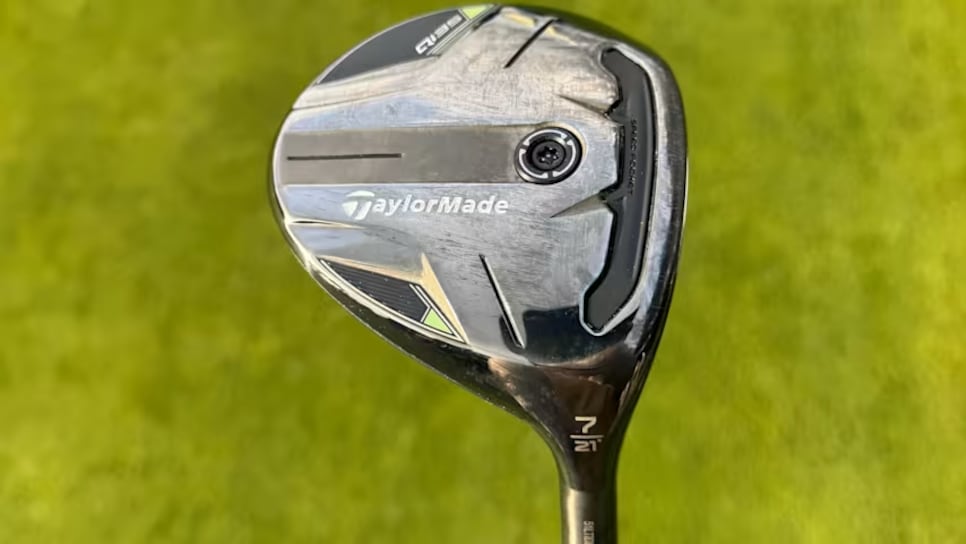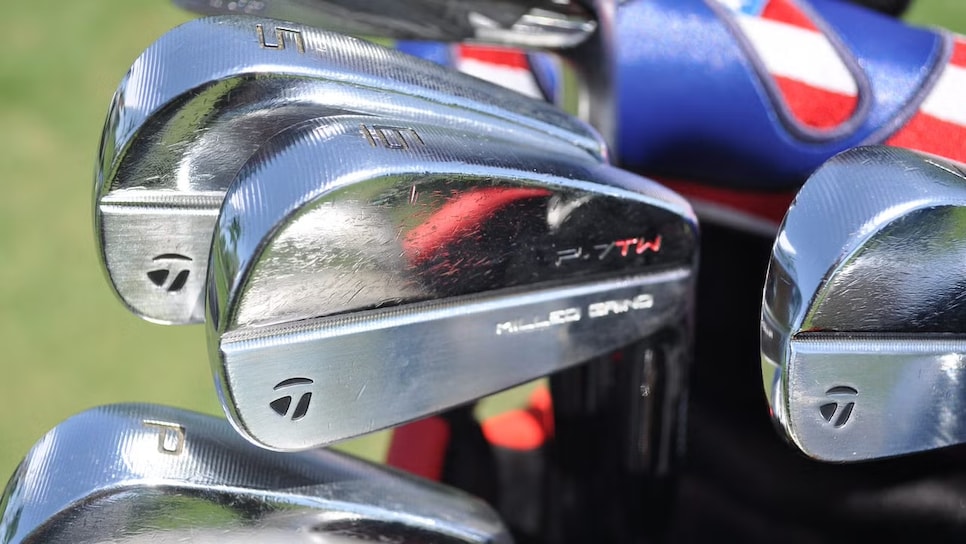Each club in Scottie Scheffler’s bag has a story. What makes these particular stories interesting is that they’ve rarely (if ever) been discussed in a public forum. That’s about to change.
Here, TaylorMade tour rep Adrian Rietveld went through the ins and outs of Scheffler’s gear and offered up several surprise insights.
RELATED: Scottie Scheffler is master of his own world
Driver void
Hot melt is ubiquitous at the tour level. Need to alter launch, spin, sound or head weight? Simply add some of the gooey substance via a port in the driver head. Nearly every pro uses holt melt in some shape or form, unless, of course, they’re a lead-tape lover and prefer something visible that can be moved around in between shots.
It’s an extremely valuable tool for tour reps. Things get a bit more complicated when you have a pro who doesn’t want hot melt added to the head but still has a list of wants when it comes to nailing a specific head weight and centre of gravity location. Scheffler falls into this camp.
The driver head comes in at 203 grams with a 22-gram back weight and 1-gram tungsten weight positioned far forward to achieve the ideal launch and spin characteristics for Scheffler. Interestingly enough, the screw in the heel [main image] is made out of tungsten instead of steel to dial in the overall weighting.
It’d be a lot easier to build Scheffler’s ideal driver if hot melt were an option – but it’s not. He wants the internal cavity void of any hot melt.
“He wants zero hot melt in the head,” Rietveld said. “Zero. It’s actually nice to have a fraction of hot melt in the head because it does catch bits of debris in the internal cavity as the club’s going through its lifespan. But yeah, there’s no hot melt that I know of. He’s got a good view on it, right? If [the head] can’t be replicated, he doesn’t want it.”
 Like a glove
Like a glove
Fresh grips are a common request on tour. Daily reps wear down the rubber, thus requiring the grips to be changed out on a regular basis to maintain a tacky feel. A general rule of thumb is to replace the handles every 30-40 rounds.
It’s important to point this out because Scheffler never changes his grips. Let that sink in for a second.
“He’s never approached me or the tour truck and asked us to change his grips,” Rietveld revealed. “Adam Scott would get his grips changed, right? Every couple of weeks. He’d just go, ‘Can you do my grips?’ Yeah, and you stick new grips on the golf club.
“[Scottie’s] never had his grips changed. The driver that he played at the PGA, that grip was absolutely worn down. His hands melt into that club, man. Like a glove.”
So much for the top player in the world pushing the benefits of routinely changing grips. He’s so particular about hand placement and feels that he’d prefer to break a grip in and use it until the club needs to be replaced.
 Fresh putter
Fresh putter
We’ve established that Scheffler doesn’t change grips until the club is on its last legs. The opposite is true of the TaylorMade putter in his bag.
As Rietveld revealed, Scheffler’s current Spider Tour X putter isn’t the one he started using last season at Bay Hill. In fact, there’s a better chance Scheffler will change his putter during the season than his grips, due to the amount of time he spends practising with the putter over the course of a season.
“He’s not playing the same Spider putter today,” he said. “It’s the same spec, right? But it’s a new putter. The putters wear and tear, they get bumped. Everybody sees it and it looks the same. You think he’s been using the same part. It’s a new part this year. Again, it’s due to the wear and tear. And maybe a fresh feel. He has a back-up putter, just in case.”
 No corners cut
No corners cut
Scheffler wanted a 5-wood at Torrey Pines. His familiarity with the club made it an obvious choice for the penal rough he’d inevitably find during the tournament week. But Rietveld had other ideas.
Believing the club would go beyond his preferred carry number (245 yards, or 224 metres), Rietveld put a Qi35 5-wood in his hands and watched it go nearly 260 yards (238 metres). Message received.
“The proof’s gonna be in what the results are,” Rietveld said. “Even if that gets two hits, I’m going to gain some trust out of him by telling him and showing him that this club’s gonna go too far.”
Instead of simply building Scheffler a 7-wood at standard length to hit the number, Rietveld went up in shaft weight, from 80 to 90 grams, while maintaining the same 5-wood length.
“I wanted weight, I wanted it to play like an iron,” he said. “Like a heavy shaft, so heavier build. I kept it at 5-wood length because his lengths are quite short anyway. He’s 42.5 inches with the 3-wood.
“So you go heavy shaft, 5-wood length and now you’ve got a 7-wood head. With that shaft, you can get a nice square face angle between 19.5 and 21 degrees of loft. Then you make it a degree more upright than the 3-wood just to match the lie angle. And then you can work from there. You can bend a little flatter, you can bend a little more upright. And now we get hitting.”
The club was nearly perfect during initial testing, if not for an extra two yards of carry. It was a number Scheffler wouldn’t even consider.
“Very quickly, we realised that this is not the club,” he said. “The extra two yards was a non-negotiable. This thing needs to go two yards shorter or it’s not going in, and that’s quite easy now because it’s a half-degree of loft, right? It’s a little bit of CG. It’s 400rpm of spin. You’re in the right ballpark.”
The 7-wood build is a reminder that Scheffler thoroughly vets clubs before they ever see the bag.
RELATED: Take your game to the next level, just like Scottie Scheffler
Grip intricacy
During recent driver testing, Rietveld could tell Scheffler wasn’t happy with the grip build. Something was off.
“I’d give him a club and I can hear him saying, ‘This grip is already something I wanna change immediately,'” said Rietveld. “We’re then sitting at lunch, and I walk over to him with the same club and ask him to explain to me why he didn’t like the grip. He’ll break it down, and he’ll go, ‘This is what I feel in my thumb.'”
Scheffler starts with six double-sided tape wraps on a ribbed Golf Pride Tour Velvet grip. The grip build is intricate and takes “the best part of three months” to get a set of irons just right before he signs off on a replacement.
“He puts in the work to be ready to put something in the bag,” he said. “People don’t know that. When I send him irons, I’m sending them with 30 grips. I’m sending the built set of iron and a box of 30 grips. Now he might use three of those, right? He might use 10 of those. What’s happening under the hood is a guy who is very much making sure he has a perfect set of tools.”
 Standard sticks
Standard sticks
For all of the intricacies to Scheffler’s driver and grip builds, his TaylorMade P7TW irons are off-the-rack standard.
“If somebody were to go buy a set, there’s no difference [to what Scottie is playing],” Rietveld said. “They’re the same thing. The highest quality product, from every tolerance to the grooves and milled grind sole. There’s no belt that’s hitting these clubs. It’s machined. It’s perfect. It’s for the No.1 player in the world.”
Piecemeal changes
When a pro replaces a set of irons, he usually pulls every club out of the bag. According to Rietveld, Scheffler does the exact opposite and replaces each iron as it begins to wear out.
“I would honestly say that it’s he treats each change as one [club],” Rietveld said. “He treats it as a set of iron, but he also treats it as an individual, as each iron is its own piece of equipment. If his pitching wedge is worn, he’s gonna replace it with a pitching wedge. He’s not replacing a full set.
“I think it’s the way it evolves and the way he holds onto the clubs until they’re in their dying days. Somebody usually has to stand up and go, alright, I think it’s time. I’d even go as far as saying he uses [them] for a season.”

